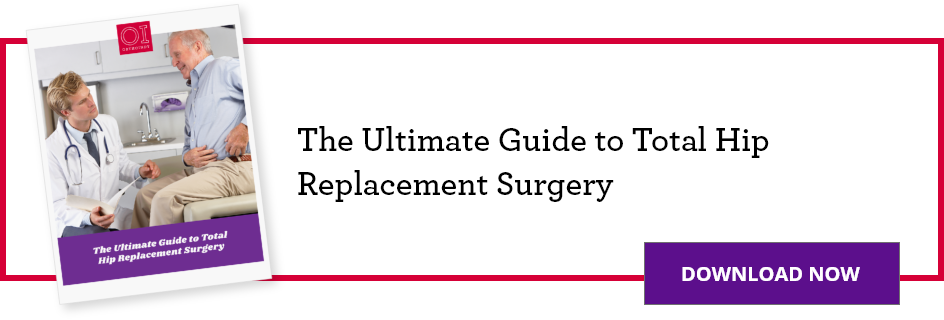THIS POST IS PART OF THE ULTIMATE GUIDE TO TOTAL HIP REPLACEMENT
Arthritis is inflammation of one or more of your joints. By far, the most common types of hip arthritis are osteoarthritis and rheumatoid arthritis, but there are more than 100 different forms of arthritis that can affect a variety of joints in your body; arthritis of the hip is a very common condition.
Anatomy
The hip is your body’s largest weight-bearing joint. This joint is also called a ball-and-socket joint. The ball is the upper end of the thighbone (femur), which fits into the socket (or acetabulum) at your pelvis.
Several muscles cross the hip joint and a strong capsule envelops the hip joint itself. Muscles are connected to bones that make up the hip joint by tendons, which are made from strong fibrous tissue, enabling motion of the joint.
Primary types of arthritis of the hip
- Osteoarthritis: The most common form of arthritis in the hip. It is a degenerative wear and tear type of arthritis where the cartilage in the hip joint gradually wears away. This causes bone rubbing on bone and can produce bone spurs. Osteoarthritis develops slowly, and the pain increases overtime.
- Rheumatoid arthritis: A chronic disease that attacks multiple joints throughout the body. It can affect the same joint on both sides of the body. The synovial membrane that lines the hip joint begins to swell, which results in pain and stiffness. Rheumatoid arthritis is an autoimmune disease which means the immune system attacks the body’s own tissues and damages the cartilage and ligaments while softening the bone.
- Post-traumatic arthritis: A form of arthritis that develops after an injury to the hip. These injuries can cause instability and additional wear of the hip joint that over time can lead to arthritis.
Hip arthritis symptoms
- Pain-often in the groin area, down the front of thigh
- Limp
- Stiffness
- Difficulties with activities, such as putting on shoes and socks, or getting in and out of the car
Physician examination
To determine whether you have arthritis in the hip your physician will ask you for a complete medical history, have you describe your symptoms and conduct a physical examination. An X-ray or MRI may be necessary to confirm the diagnosis and determine if there are other problems.
Make an appointment with an OrthoIndy hip specialist
Hip arthritis treatment
There is no cure for arthritis in the hip or knee; however there are a number of treatment options. Often, non-surgical treatment can allow a comfortable level of function before any surgical treatment is needed.
Nonsurgical treatment options, include:
- Activity minimization such as switching from high impact activity to low impact activity
- Weight loss
- Physical therapy
- Assistive devices such as a cane or shoe inserts
- Medications such as non-steroidal anti-inflammatories
- Corticosteroid (cortisone) injections
If nonsurgical treatment options for hip and knee arthritis symptoms fail to provide pain relief, a total joint specialist may recommend joint replacement.
Learn more about having hip pain treated at OrthoIndy.

Schedule an appointment
Your well-being is important to us. Click the button below or call us to schedule an appointment with one of our orthopedic specialists. If your injury or condition is recent, you can walk right into one of our OrthoIndy Urgent Care locations for immediate care. For rehabilitation and physical therapy, no referral is needed to see one of our physical therapists.





